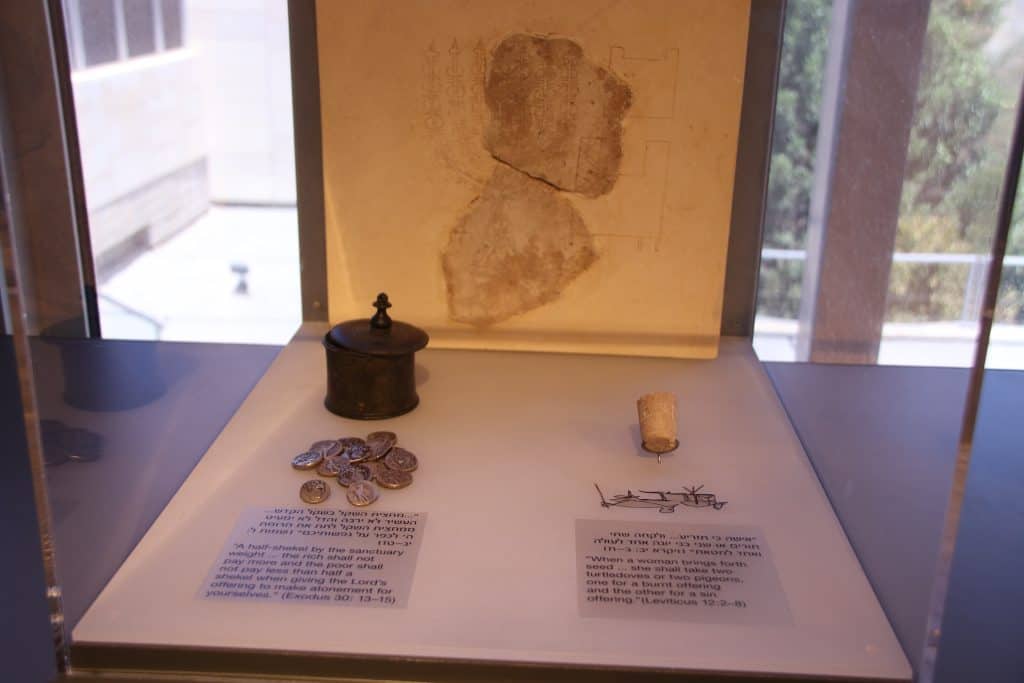The Second Temple was the Jewish holy temple, which stood on the Temple Mount in Jerusalem between c. 516 BCE and c. 70 CE. It gave name to the Second Temple period. According to the Hebrew Bible, it replaced Solomon’s Temple (the First Temple), which was destroyed by the Neo-Babylonian Empire in 586 BCE, when Jerusalem was conquered, and part of the population of the Kingdom of Judah was taken into exile to Babylon.

According to the Bible, the Second Jewish Temple was a relatively modest structure constructed by several Jewish exile groups returning to the Land of Israel from Babylon under the Achaemenid-appointed governor Zerubbabel.
However, during the reign of Herod the Great, the Second Temple was completely refurbished, and the original structure was overhauled into large and magnificent edifices and facades that are more recognizable. Much as the Babylonians destroyed the First Temple, the Romans destroyed the Second Temple and Jerusalem in c. 70 CE as retaliation for an ongoing Jewish revolt. The second temple lasted for a total of 585 years (516 BCE to c. 70 CE).
The Construction of the Second Jewish Temple
So the construction of the Second Temple was completed under the leadership of the last three Jewish Prophets, Haggai, Zechariah, and Malachi, with Persian approval and financing. Based on the biblical account, after the return from Babylonian captivity under Zerubbabel, arrangements were almost immediately made to reorganize the desolated Yehud Province after the demise of the Kingdom of Judah seventy years earlier.

The body of pilgrims, forming a band of 42,360, having completed the long and dreary journey of some four months from the banks of the Euphrates to Jerusalem, were animated in all their proceedings by a strong religious impulse, and therefore, one of their first concerns was to restore their ancient house of worship by rebuilding their destroyed Temple and reinstituting the sacrificial rituals.

The Second Temple was a center of Jewish worship and culture and played a significant role in the Jewish faith. It was the site of many important events, such as the Maccabean revolt and the rededication of the Temple by Judah Maccabee in 164 BCE, which is celebrated as the holiday of Hanukkah.
The Temple was also the center of Jewish pilgrimage during the major festivals of Passover, Shavuot, and Sukkot.
The Second Jewish Temple is Amplified By Herod the Great
During the reign of Herod the Great, the Temple complex was impressive, with a massive stone retaining wall, known as the Western Wall, surrounding the perimeter. Moreover, the Temple was divided into several sections, including the Holy of Holies, the innermost sanctuary, and the most sacred Jewish space, where the foundation stone is to be found.
Old City Jerusalem Tour

Moreover, only the high priest could enter the Holy of Holies, and only on the Day of Atonement, Yom Kippur. The Second Temple, during Herod’s reign, also had a large courtyard known as the Temple Mount, which was accessible to all Jews.

The Temple As A Source of Tensions
This area included the Court of Women, where women were allowed to pray and participate in certain religious activities. Despite its significance, the Second Temple was not without controversy. Different Jewish sects, including the Pharisees, Sadducees, and Essenes, emerged during the Second Temple period. These groups had different beliefs and practices and sometimes clashed with one another.

Additionally, the Temple was subject to political and military control by various empires, including the Persians, Greeks, and Romans. The Romans’ destruction of the Second Temple in 70 CE was a major turning point in Jewish history.
Moreover, the event is commemorated on the Jewish holiday of Tisha B’Av. The loss of the Temple led to a period of exile and dispersion for the Jewish people, known as the Diaspora. Despite this, the Second Temple remains a significant symbol of Jewish history and culture, and its legacy continues to influence Jewish traditions and beliefs.

